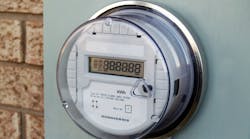The Association for Demand Response & Smart Grid (ADS) released a new case study last week that examines how systems thinking and an open attitude can help utilities innovate, learn, and view smart meter rollouts as opportunities to proactively reach out to their entire customer base. The case study uses interviews with employees and partners of San Diego Gas & Electric (SDG&E) to illustrate how the utility's smart meter deployment and community outreach affected its traditional business processes and how it involved customers and stakeholders to co-design new products, programs, and systems. The narrative-style case study is the fourth in an ADS series that goes behind the scenes to examine the goals, reasoning, and processes used to design and evaluate program offerings and tools.
"This case study highlights the way that a traditional, investor-owned utility, can still find ways to be a creative learning organization by working with its customers and community stakeholders in designing its programs and products," said Dan Delurey, Executive Director of ADS.
Delurey noted that SDG&E was chosen as a case study subject because it would appear that many of its lessons could be useful to other utilities, regardless of size or governance structure. The case study, which was funded by the Department of Energy's Office of Electricity Delivery and Energy Reliability, and authored by Judith Schwartz of To the Point, lists the following among the lessons learned by SDG&E in its smart meter deployment:
- Cultural shifts take time and commitment from leadership and managers throughout the organization.
- Transparency and accountability are critical to effective collaboration.
- If customers, stakeholders, and interveners are partners in the creation process, they have a vested interest in the successful outcome of new programs and practices.
- Prototyping and rapid development models work successfully with a structured collaborative framework, even in regulated environments.
- Working with trusted community-based partners allows utilities to proactively anticipate the changing requirements and concerns of evolving communities while communicating more effectively.
- Deployment of smart meters can provide a focal point to connect with every customer in a positive and proactive way.
- A learning mindset is effective when applied to technical, IT, and operational projects as well as customer outreach.
"Like the previous case studies released by ADS, our format uses interviews with the 'players' to provide an inside view of implementing a smart meter rollout, and challenges readers to consider how they would apply these experiences to their own organizations," said Delurey. "You get to hear from SDG&E personnel, not just what their conclusions are, but how they got there, and who they worked with along the way. We hope that practitioners and policymakers will use this to see what lessons were learned by SDG&E and how they might be applied to their own work."
Delurey also noted that one aspect of the deployment at SDG&E involved the question of how energy efficiency programs could be enhanced via integration with the smart meter deployment, and how traditional barriers and silos are being transcended. This question will also be explored in-depth at the upcoming National Summit on Integration of Energy Efficiency and Smart Grid being held in Washington, DC Oct. 15-16. More information on that is available at www.energyefficiencysmartgrid.org.
The case study can be found on the ADS website at www.demandresponsesmartgrid.org/CaseStudies.


